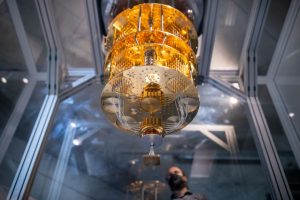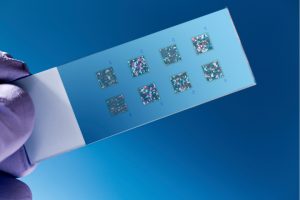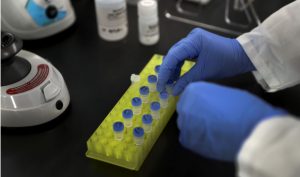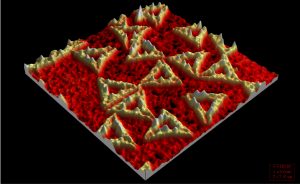Supercomputers have now surpassed the exascale barrier of 1018 operations per second. Artificial intelligence has long been hidden in our devices, and has recently come to the fore through large language models such as ChatGPT and image generators. We have been hearing about the breakthrough of quantum computing for years, although its promises have yet to materialise. These are some of the trends in advanced technology, along with bolder proposals such as chemical computing. But there are frontiers that some researchers are exploring that are still a long way from yielding practical systems, although they are already offering concrete applications along the way. This is where the future of DNA computing fits in.

A computer is a device that can execute a programme by following instructions, an algorithm. A machine capable of doing this needs logic gates, a type of device that can receive an input of data and carry out a logical operation to generate a result. In today’s computers, this is done by semiconductors, which can give a binary response in the movement of electrons. Quantum computing exploits the alternative values of the properties of subatomic particles. And certain chemical reactions can also be modulated, allowing molecules to act as logic gates; this is the basis of chemical computing.
From the test tube to SAT problem solving
The idea of using molecules and their reactions as logic gates has a long theoretical history. In 1959, the physicist Richard Feynman proposed the creation of sub-microscopic computers, and molecules offered the ideal substrate. Among them, DNA is particularly versatile: it can form chains of variable length and contains a code that allows them to be paired together. The use of DNA opens up a particular field within chemical computing, that of biological computing or biocomputing.

In 1994, University of Southern California computer scientist Leonard Adleman, who is also credited with coining the term “computer virus”, published the seminal study of DNA computing in Science. His computer, called TT-100 (from Test Tube 100), was just a test tube containing 100 microlitres of DNA strands specially designed to react with each other by following steps (an algorithm) to complete a logical Hamiltonian path; in its graphical version, this problem consists of drawing a line through all the vertices of a figure once. A typical case is the problem of the traveller who has to visit several cities by the shortest route. In Adleman’s experiment, the DNA fragments represented the cities, and they joined one another in different possible orders to eventually achieve the optimum by chemical means.

Adleman’s study was only a proof of concept; it took seven days to solve a trivial problem that could be solved in minutes with a pencil and paper. But it showed the way: “For the long term, one can only speculate about the prospects for molecular computation,” he wrote. In 2002, the scientist and his collaborators used DNA computing to solve a type of computer science problem called SAT, which the authors described as “the largest yet solved by non-electronic means” and which, with more than a million possible solutions, could not be solved without computational help. Before Adleman, other scientists such as Richard Lipton of Princeton University had already tackled this type of problem using DNA computation.
The dream of DNA computing
Compared to conventional computing, DNA offers higher information density, lower power consumption and parallel processing, which would provide a speed advantage. But while the first prototypes of DNA computers date back to the 1990s, and progress has been made in using DNA as a digital storage medium, computing is still at the proof-of-concept stage.
Although operating in parallel saves time, the speed is still very slow: according to University of Oxford computer scientist Marta Kwiatkowska, finding the square root of a four-digit number takes several hours. Moreover, the material, DNA, is single-use. According to Kwiatkowska, it is the biological nature of DNA that makes it particularly interesting, allowing it to be used in “the realm of environmental biosensing, or delivering medicines and therapies inside living organisms.” One advantage in this field is the ability to combine computation with the use of DNA in the form of mechanical nanorobots.

An impressive breakthrough came from China in 2023. Researchers at Shanghai Jiao Tong University have created a DNA integrated circuit whose logic gates can form 100 billion circuits, all working in parallel. As their study published in Nature explains, this is a general-purpose computer, not limited to very specific algorithms as in the pioneering experiments; “programmability enables specification of the device to perform various algorithms whereas scalability allows the handling of a growing amount of work by the addition of resources to the system,” write the authors, led by scientists Fei Wang and Chunhaimake Fan.
The system has been used to solve simple problems such as square roots or second-degree equations, but has also been tested to identify RNA molecules associated with kidney cancer in different samples. In this vein, the authors speak of future applications in which such a device would be able to diagnose a disease and release a chain of DNA with therapeutic effects—a DNA computer to diagnose and cure at the same time. Still a dream, but this is how many breakthroughs begin.
Comments on this publication